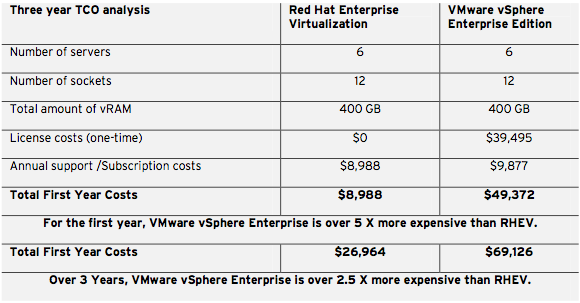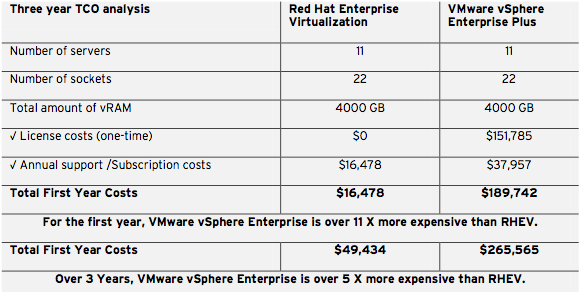Red Hat Enterprise Virtualization (RHEV) 3.0 has been in the works for some time. Today Red Hat took the wraps off the release. Red Hat boasts more than 1,000 new features with RHEV 3.0, including a new user portal for self-provisioning, local storage and converting the management application to a Java application that runs on JBoss. With RHEV 3.0, Red Hat is going straight after VMware for customers.

RHEV 3.0 has been in beta since last August, and an open beta since September of last year to anyone with a Red Hat Network account.
If you look at many of the major features in RHEV 3.0, you’ll see many come directly from improvements to the Linux kernel and KVM. RHEV 3.0 now has support for up to 160 logical CPUs and 2TB of RAM. The KVM networking stack has moved into the Linux kernel itself and out of userspace for better performance. RHEV 3.0 now supports memory overcommitment, which allows allocation of more RAM to VMs than is present to physical host.
Red Hat has also beefed up its scheduler, live migration, desktop management, storage management, reports and migration tools. But where Red Hat is really getting aggressive is pricing and messaging targeted at VMware’s vSphere Enterprise and VMware View.
RHEV Pricing
Red Hat offers pricing guides for its RHEV for Servers and RHEV for Desktops that compare the pricing between RHEV and VMwares products. According to Red Hat’s guides, its pricing scenario for 100 virtual guests, using six servers (each with two sockets and 400GB of RAM) will cost nearly $50,000 the first year for VMware vSphere Enterprise Edition. The same setup for RHEV 3.0 for Servers runs just less than $9,000.

The big difference in pricing, of course, is licensing. Red Hat doesn’t charge for licensing – it charges for annual subscriptions and support. The licensing cost for VMware vSphere is nearly $40,000. The annual support/subscription costs for Red Hat and VMware are fairly close: $8,988 for Red Hat, and $9,877 for VMware. Red Hat’s still cheaper than VMware on that, but not by much.

Another scenario with 11 servers for 250 guests is priced at $16,478 (Red Hat) versus $189,742 (VMware) for the first year. Red Hat continues to close the gap in features between RHEV and vSphere, but has a very wide gap in price. The question is, who’s buying? Is RHEV good enough to start displacing VMware vSphere and VMware View?





















